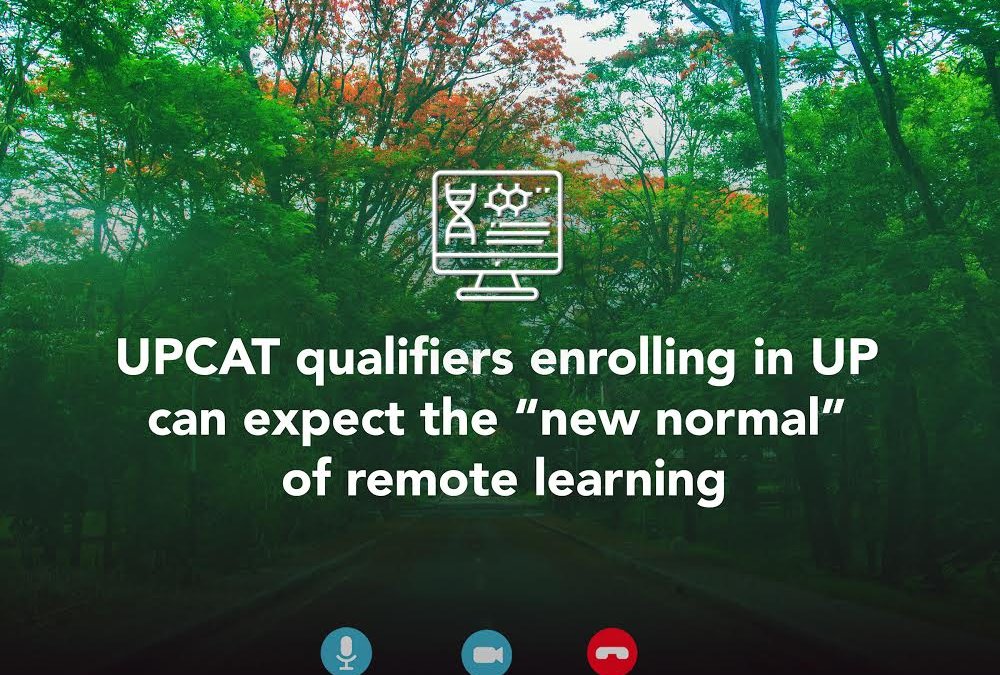
For this year’s batch of successful UPCAT qualifiers who will be entering the University of the Philippines (UP) as freshmen enrollees, their first taste of university life will be that of the “new normal”: remote teaching and learning, with the possibility of blending remote and face-to-face meetings.
A memorandum issued by the UP Office of the Vice President for Academic Affairs dated June 4, 2020 lays down what incoming UP freshmen can expect.
Remote teaching and learning
The memorandum states that UP, like other universities in the country, ASEAN and the world, is “putting the safety of our students and faculty first.” This will be done by adopting remote teaching and learning for academic year 2020-2021. A combination of remote teaching/learning and face-to-face meetings will be done in laboratory, studio and practicum courses, if the COVID-19 situation permits it, and following public health and social distancing requirements.
Remote teaching and learning cover both asynchronous or non-real time communication between teachers and learners, and synchronous or real-time communication between teachers and learners. Asynchronous communication includes text-based communication such as email, Facebook Messenger, Viber groups, etc., and online discussion boards in different learning platforms such as UP’s Learning Management Systems, Canvas, Google Classroom, etc. Synchronous communication includes lectures, webinars and teleconferences using such platforms as Zoom, Google Hangouts Meet, etc.
“Given the uncertain trajectory of the pandemic at this time, the University is preparing for the scenario where courses are delivered remotely throughout the first term without sacrificing quality,” the memorandum states, adding that remote learning is not necessarily inferior and in certain cases may even be superior to face-to-face learning. Starting July 1, UP faculty will be redesigning course offerings for remote learning.
Laying the infrastructure
In addition, UP is laying the physical infrastructure for remote learning, such as gadgets for online learning, Internet or cell phone data connectivity. The academic infrastructure is also being strengthened through upgrading the University’s Library Management System, subscribing to a cloud-based service that provides remote access to library resource, subscribing to relevant databases of peer-reviewed literature and e-publications, retooling faculty and staff, and redesigning courses for remote delivery to different types of students depending on their internet connectivity in their homes.
To ensure UP’s readiness for remote learning, the UP System administration has obtained the Board of Regents’ approval in principle to move the opening of classes to September 10, subject to ongoing consultations with faculty and students. UPCAT qualifiers will be informed of the academic calendar, including the opening of classes, and details of UP’s remote learning delivery within July.
Important deadlines
Generally, UPCAT qualifiers are categorized into four types: Type 1 would be those accepted in their first choice of degree program; Type 2 would be those accepted in their second choice of degree program but waitlisted in their first choice; Type 3 would be those who are waitlisted in their choices of degree programs; and Type 4 would be those who will be assigned to a degree program with available slots.
UPCAT qualifiers were reminded of the following deadlines: June 30, 2020 to confirm their acceptance of the University’s offer of an admission slot in UP for 2020; July 6 to 31, 2020 to confirm acceptance at the level of the constituent unit (CU) they applied for, for those who are waitlisted and those who are assigned to a degree program with available slots; and July 5 to August 15, 2020 to appeal for reconsideration, to be submitted to their CU of interest.
More than 100,000 high school students took the UPCAT in October 2019. Results were released on May 30, 2020, with 12,000 qualifiers offered slots to enter the national university.
Download a copy of the memorandum here.
This feature was originally posted on the UP System website

